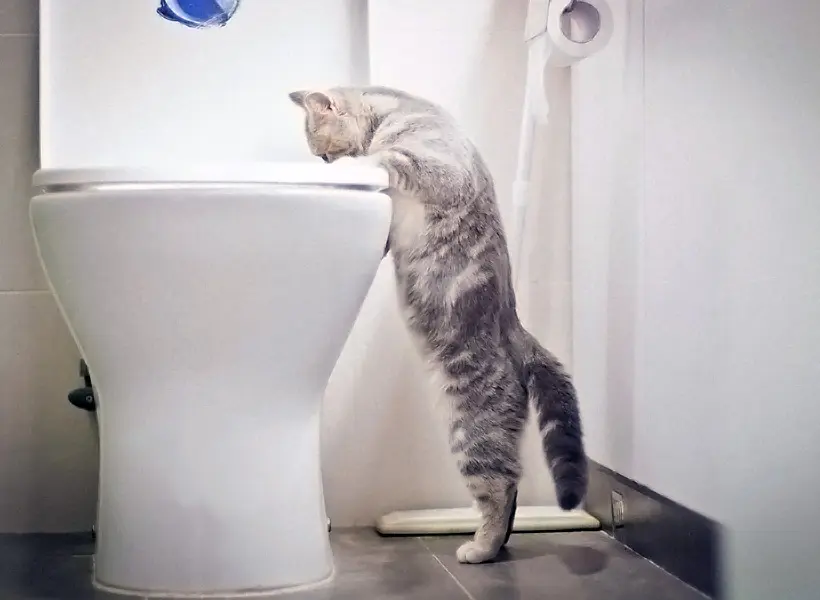Potential Issues of Flushing Cat Poop Down Your Toilet - Safeguard Your Pipes
Potential Issues of Flushing Cat Poop Down Your Toilet - Safeguard Your Pipes
Blog Article
Are you currently trying to find help and advice How to Dispose of Cat Poop and Litter Without Plastic Bags?

Introduction
As pet cat proprietors, it's important to be mindful of exactly how we throw away our feline close friends' waste. While it might appear practical to flush feline poop down the toilet, this practice can have detrimental effects for both the setting and human wellness.
Alternatives to Flushing
Luckily, there are safer and more liable methods to deal with cat poop. Take into consideration the complying with alternatives:
1. Scoop and Dispose in Trash
One of the most common approach of taking care of feline poop is to scoop it right into a naturally degradable bag and toss it in the trash. Make certain to use a specialized litter scoop and take care of the waste quickly.
2. Usage Biodegradable Litter
Opt for naturally degradable pet cat litter made from materials such as corn or wheat. These litters are environmentally friendly and can be securely disposed of in the trash.
3. Bury in the Yard
If you have a lawn, take into consideration burying feline waste in an assigned location far from veggie yards and water sources. Make sure to dig deep sufficient to avoid contamination of groundwater.
4. Set Up a Pet Waste Disposal System
Purchase an animal waste disposal system especially made for pet cat waste. These systems make use of enzymes to break down the waste, minimizing odor and environmental influence.
Wellness Risks
Along with environmental worries, flushing pet cat waste can additionally present wellness dangers to people. Pet cat feces may have Toxoplasma gondii, a parasite that can cause toxoplasmosis-- a potentially severe illness, particularly for expecting women and people with weakened immune systems.
Ecological Impact
Flushing cat poop presents dangerous pathogens and bloodsuckers right into the water system, presenting a substantial risk to water ecosystems. These pollutants can adversely influence marine life and compromise water high quality.
Final thought
Liable pet dog possession expands past giving food and shelter-- it also involves proper waste management. By avoiding purging cat poop down the commode and going with alternative disposal approaches, we can minimize our environmental footprint and secure human health and wellness.
Why Can’t I Flush Cat Poop?
It Spreads a Parasite
Cats are frequently infected with a parasite called toxoplasma gondii. The parasite causes an infection called toxoplasmosis. It is usually harmless to cats. The parasite only uses cat poop as a host for its eggs. Otherwise, the cat’s immune system usually keeps the infection at low enough levels to maintain its own health. But it does not stop the develop of eggs. These eggs are tiny and surprisingly tough. They may survive for a year before they begin to grow. But that’s the problem.
Our wastewater system is not designed to deal with toxoplasmosis eggs. Instead, most eggs will flush from your toilet into sewers and wastewater management plants. After the sewage is treated for many other harmful things in it, it is typically released into local rivers, lakes, or oceans. Here, the toxoplasmosis eggs can find new hosts, including starfish, crabs, otters, and many other wildlife. For many, this is a significant risk to their health. Toxoplasmosis can also end up infecting water sources that are important for agriculture, which means our deer, pigs, and sheep can get infected too.
Is There Risk to Humans?
There can be a risk to human life from flushing cat poop down the toilet. If you do so, the parasites from your cat’s poop can end up in shellfish, game animals, or livestock. If this meat is then served raw or undercooked, the people who eat it can get sick.
In fact, according to the CDC, 40 million people in the United States are infected with toxoplasma gondii. They get it from exposure to infected seafood, or from some kind of cat poop contamination, like drinking from a stream that is contaminated or touching anything that has come into contact with cat poop. That includes just cleaning a cat litter box.
Most people who get infected with these parasites will not develop any symptoms. However, for pregnant women or for those with compromised immune systems, the parasite can cause severe health problems.
How to Handle Cat Poop
The best way to handle cat poop is actually to clean the box more often. The eggs that the parasite sheds will not become active until one to five days after the cat poops. That means that if you clean daily, you’re much less likely to come into direct contact with infectious eggs.
That said, always dispose of cat poop in the garbage and not down the toilet. Wash your hands before and after you clean the litter box, and bring the bag of poop right outside to your garbage bins.
https://trenchlesssolutionsusa.com/why-cant-i-flush-cat-poop/

Do you like reading up on Don’t flush cat feces down the toilet? Write a remark down the page. We'd be delighted to find out your views about this piece. We hope that you come back again soon. Remember to set aside a second to distribute this blog if you liked it. Thank-you for going through it.
Click Here! Report this page